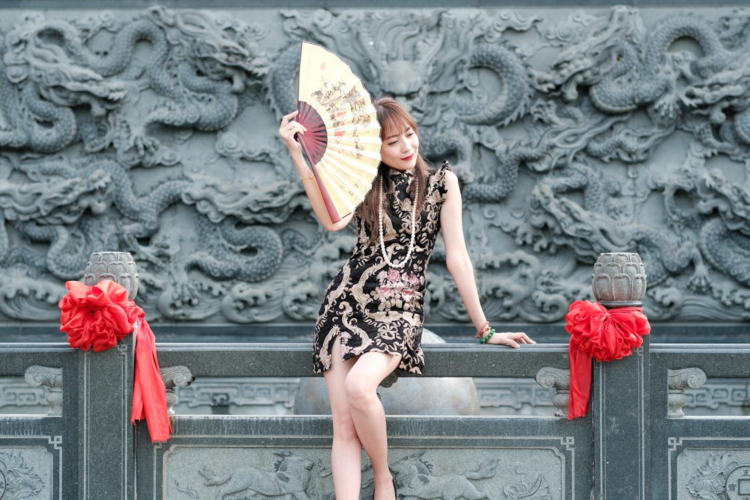Fashion is an ever-evolving entity, constantly changing to reflect cultural shifts, technological advancements, and the influence of new generations. Today, we are inundated with a whirlwind of trends that are both exciting and fleeting, often dictated by social media, celebrity culture, and the rapid production cycles of fast fashion. Yet, amidst this constant churn, there is an enduring elegance to classic fashion that remains appealing. Appreciating classic fashion over modern trends requires a thoughtful look back at the timeless qualities that make certain styles resilient, meaningful, and more sustainable than today’s transient trends.
At its core, classic fashion is defined by its simplicity, versatility, and longevity. Unlike trends that are often born out of novelty and then quickly fade, classic styles have stood the test of time. The little black dress, the tailored suit, the trench coat, and well-fitted jeans have remained staples of wardrobes for decades, transcending generational and seasonal changes. These garments are not bound by the whims of fleeting style movements; they instead focus on fit, form, and the inherent beauty of well-crafted design.
One of the key reasons why classic fashion endures is its emphasis on quality over quantity. In an age where fast fashion produces inexpensive, mass-produced garments at a breakneck pace, classic fashion tends to prioritize well-made, high-quality pieces. For instance, a well-tailored suit made from quality wool or a leather jacket crafted by skilled artisans may cost more upfront, but the longevity of these pieces makes them an investment. They not only wear better over time but also develop a patina of character that is absent in cheap, mass-produced items. This focus on craftsmanship and attention to detail is one of the aspects that give classic fashion its enduring appeal.
Another important consideration is the timelessness of classic fashion. While modern trends are often characterized by their quick turnover and reliance on novelty, classic styles avoid the temptation to constantly reinvent themselves. Instead of leaning into the latest craze, classic fashion is built on the foundation of enduring silhouettes, shapes, and colors that remain relevant no matter what the current trend cycle might be. For example, the simplicity of a well-cut blazer or a pair of black pumps will always feel sophisticated, regardless of whether they are “in fashion” at the moment. These items don’t need to conform to the whims of trend cycles, allowing their wearers to cultivate an air of understated elegance that is not dependent on what is currently popular.
Moreover, classic fashion has an inherent flexibility that allows it to seamlessly transition across different contexts and time periods. The versatility of a black turtleneck, for instance, allows it to be dressed up or down, paired with everything from denim jeans to a pencil skirt. Classic fashion tends to have a chameleon-like quality, allowing the same items to work for different seasons, occasions, and social settings. This adaptability is in stark contrast to many modern trends, which can sometimes feel too specific to a particular moment or style, making them harder to incorporate into a long-term wardrobe.
There is also a level of authenticity and integrity in classic fashion that is often lacking in contemporary trends. Trends are often driven by the desire for novelty or the pursuit of attention, leading many people to wear what is “in” rather than what is true to their own personal style. This results in a cycle of buying clothes that may not resonate with one’s true taste or needs. Classic fashion, on the other hand, tends to reflect a deeper sense of self-expression and personal identity. When people invest in classic pieces, they are more likely to choose items that align with their own preferences and values, rather than simply following the herd. This personal connection to the clothes one wears fosters a greater sense of satisfaction and confidence.
The pursuit of modern trends can sometimes lead to a disconnection from personal values, especially when the focus shifts to the latest and most popular items rather than making thoughtful, conscious decisions. Fast fashion, in particular, has been criticized for its negative environmental impact, as the industry’s rapid production methods encourage overconsumption, waste, and the exploitation of resources. In contrast, the ethos of classic fashion often involves a more sustainable approach. By prioritizing longevity, quality, and timeless design, individuals who appreciate classic fashion are more likely to invest in pieces that last for many years, rather than constantly replenishing their wardrobes with disposable garments. This not only reduces the environmental footprint but also helps to foster a more mindful and intentional approach to personal style.
Furthermore, there is an undeniable nostalgia associated with classic fashion that many people find comforting and grounding. Certain garments and styles evoke memories of past decades, whether it’s the glamour of the 1950s, the refined elegance of the 1960s, or the rebellious spirit of the 1970s. Classic fashion allows people to tap into a shared cultural history and express themselves through the lens of previous eras. This sense of connection to the past is something that modern trends, with their fast turnover and reliance on novelty, rarely offer. Classic fashion invites people to reflect on the styles and influences that have shaped our cultural identity, creating a more timeless and meaningful relationship with clothing.
Another aspect of classic fashion that deserves appreciation is its ability to transcend gender and age. While trends often cater to specific demographics—targeting young, fashion-forward individuals or focusing on gender-specific designs—classic fashion embraces a universal approach. Many classic garments, like trench coats, silk scarves, or tailored trousers, are equally flattering and appropriate for people of all genders and ages. This inclusivity gives classic fashion a broad appeal and makes it easier to build a wardrobe that can serve different stages of life, from the professional workplace to casual weekend outings, and from one season to the next.
While modern trends will continue to influence fashion, there is something inherently satisfying and enduring about the beauty of classic fashion. By prioritizing quality, timeless design, and personal expression, classic pieces allow individuals to curate wardrobes that feel authentic, sustainable, and adaptable. In an era of hyper-consumerism and fleeting trends, appreciating classic fashion offers a refuge of simplicity and elegance. It reminds us that style doesn’t need to be dictated by what is “in” at the moment, but instead can be grounded in thoughtful choices and enduring pieces that will always remain in fashion.



